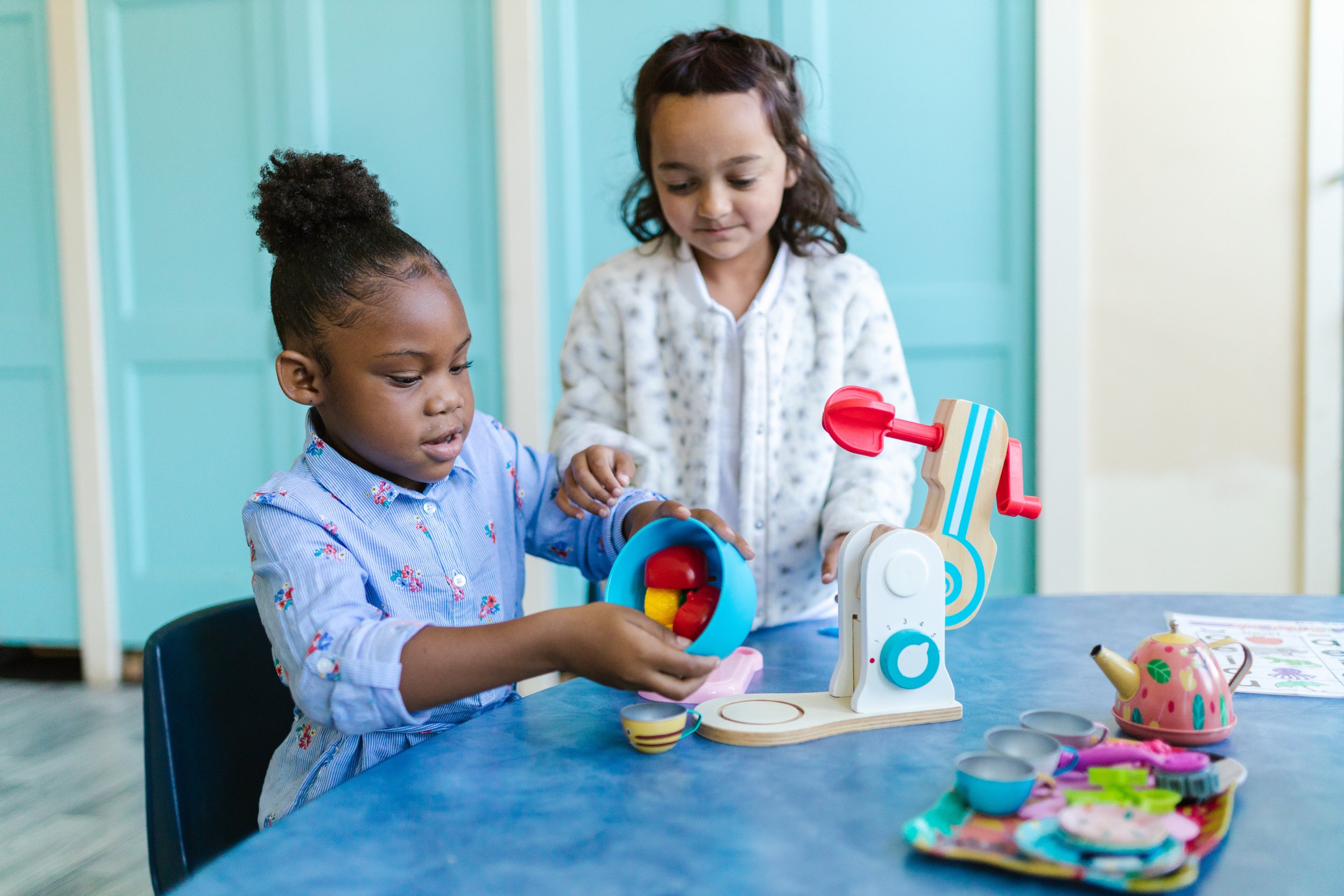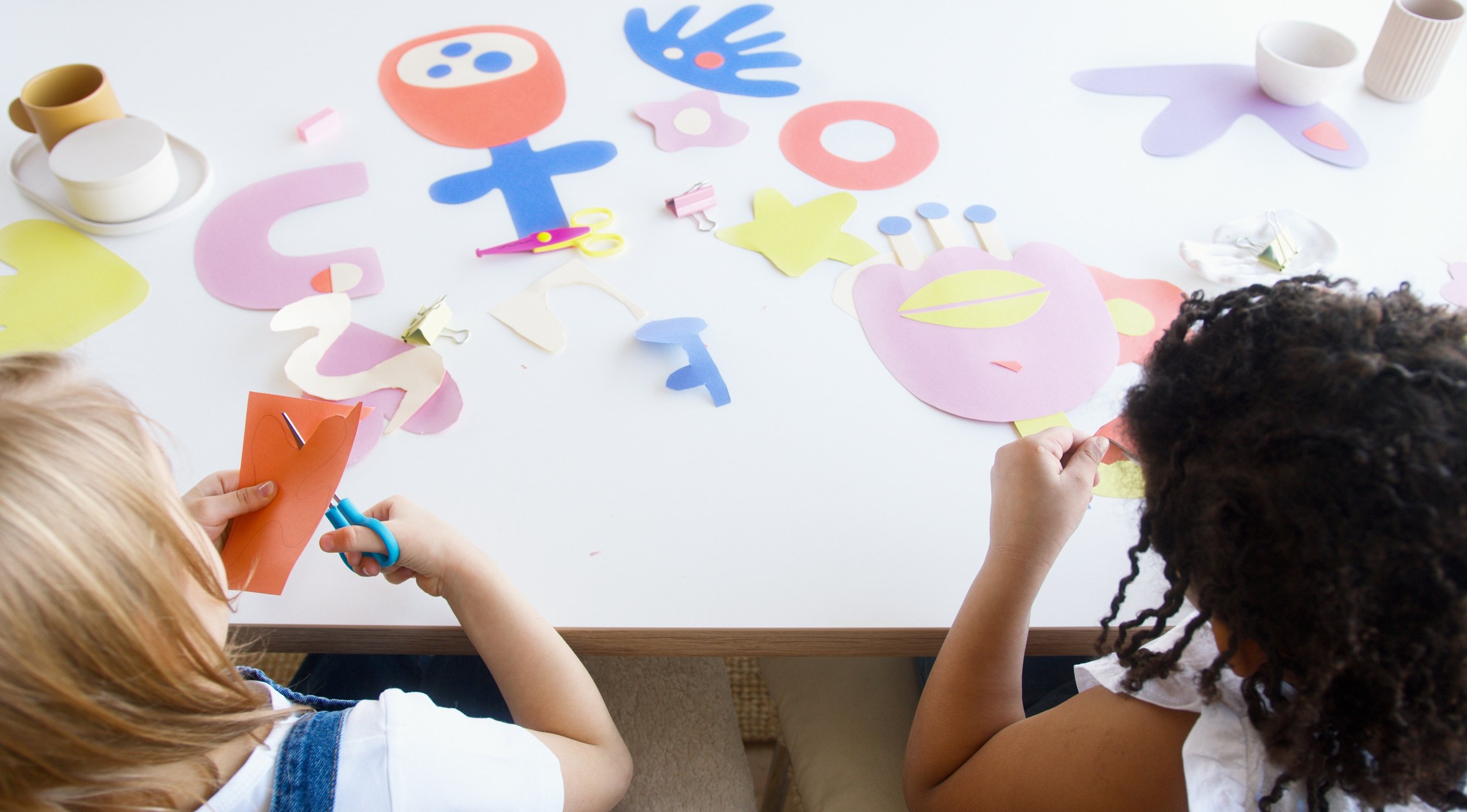What does speech therapy look like for children 5 and under?
Speech therapy sessions for children under the age of 5-years-old are primarily child-led. This means the speech-language pathologist (SLP) follows the child’s actions and interests. Oftentimes, these therapy sessions will look just like play! Children are most engaged, motivated, and ready to learn when they are having fun! Play-based speech therapy is strategically planned to target specific skills around a play toy or activity. Child-led and play-based therapy help children to increase attention, build positive interactions, learn social skills, and make better connections with real-life events. In speech therapy, we want each child to have the time of their life so they will be happy and excited to imitate and/or spontaneously use speech.
While it is appropriate for older kids to sit at a table, look through books, recite flash cards, and complete table activities, this is simply not realistic for our little ones. If we were to use this same clinician-directed approach with children 5 & under, we would see lots of kids sliding out of chairs, quickly losing interest, and constantly making a mad dash for the door. Kids learn best when they are in a naturalistic setting. The best way to promote carry-over from speech therapy to real-life is by showing kids exactly how they would use new words and phrases in real-life situations.
Children are most likely to be engaged in activities that look fun and entertaining. For example, a child is learning to use the word help. Are they more likely to learn the word by…
Sitting at the table looking at a picture of another child asking for help
ORTrying to get to all the jingling and shaking they hear coming from the colorful locked box?
Definitely option 2! They will be so excited to see what’s inside the box they will be far more motivated to ask for help than if they are just repeating what you say while looking at a picture.
Another example is teaching the words on and off. What sounds more realistic?
Showing a child a picture of a light bulb on and then a picture of a light bulb off and asking them to repeat
ORUsing a variety of colored lights that only turn on when the child exclaims on or off.
Again, definitely option 2!
What seems like the better strategy for teaching a 3-year-old kiddo the word stop?
Racing cars/trucks/wind-up toys across the room then yelling stop once they crash
ORLooking at pictures of stop signs.
The answer is absolutely option 1!
In speech therapy, children often have a language goal to learn to effectively label body parts and clothing items. Chances are, parents have already tried working on this at home by asking “what’s this?” while pointing at a shirt or their nose. If that didn’t work at home, it likely won’t work in therapy for the SLP. Instead, you may see your child’s therapist use a doll or Mr. Potato head set to naturally facilitate the use of these words. I.e. “I found her shoes!”, “Uh oh! His nose fell off!”, “Hat on”, “Does baby want shoes or a hat?”
Be prepared to talk about your child’s interests with their SLP. If your kiddo loves Mickey Mouse and Baby Shark, that will most likely be incorporated in their therapy sessions! Worried that your child doesn’t like to play with toys? That’s not a problem at all! Many little ones are often more interested in their parent’s keys, their sister’s shoes, tupper-ware, strings, soft blankets, or empty boxes. Your child’s therapist will work hard to incorporate these interests into the therapy session.
If you aren’t sure what goal is being targeted during a play-based therapy session, don’t be afraid to ask the SLP, “what speech-language goal is this helping my child with?” Chances are, they are working on multiple goals at a time! By using a toy barn and farm animals, the SLP may be targeting basic concepts (in, on, under, out, on top, etc.) while also targeting requesting (want cow, I want the sheep, more animals, etc.).
Still on the fence about play-based therapy for your child? Be open with your child’s SLP about your concerns. They will be more than happy to work with an approach that best suits your child. You can also learn more about these therapy approaches in The Importance of Play-Based Therapy and The Benefits of Child-Led Play For Speech and Language Development.
Does play-based and child-led therapy sound like a great fit for your child, but they are over 5-years-old? No worries! These approaches are a great option for ANY child needing to increase their communication skills. After your child’s speech and language evaluation, let their SLP know you feel they would benefit best from a child-led or play-based therapy approach.




